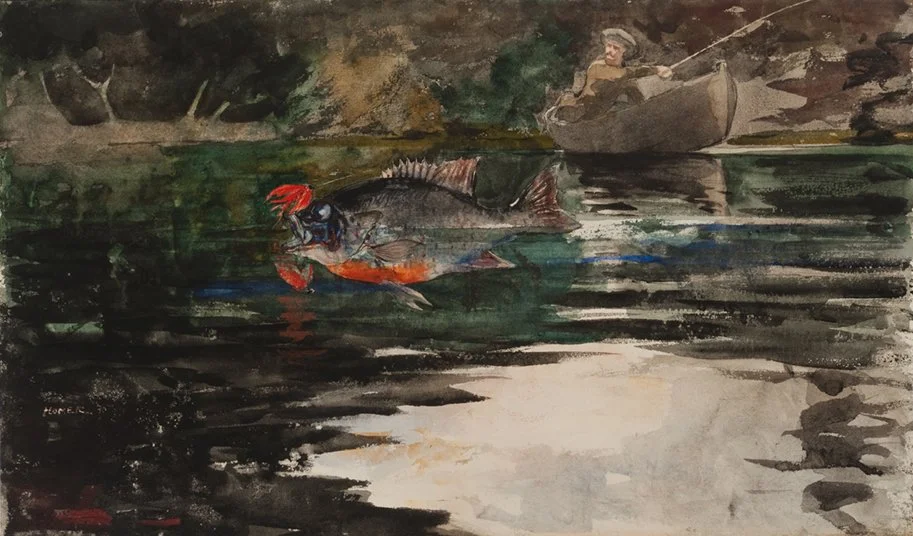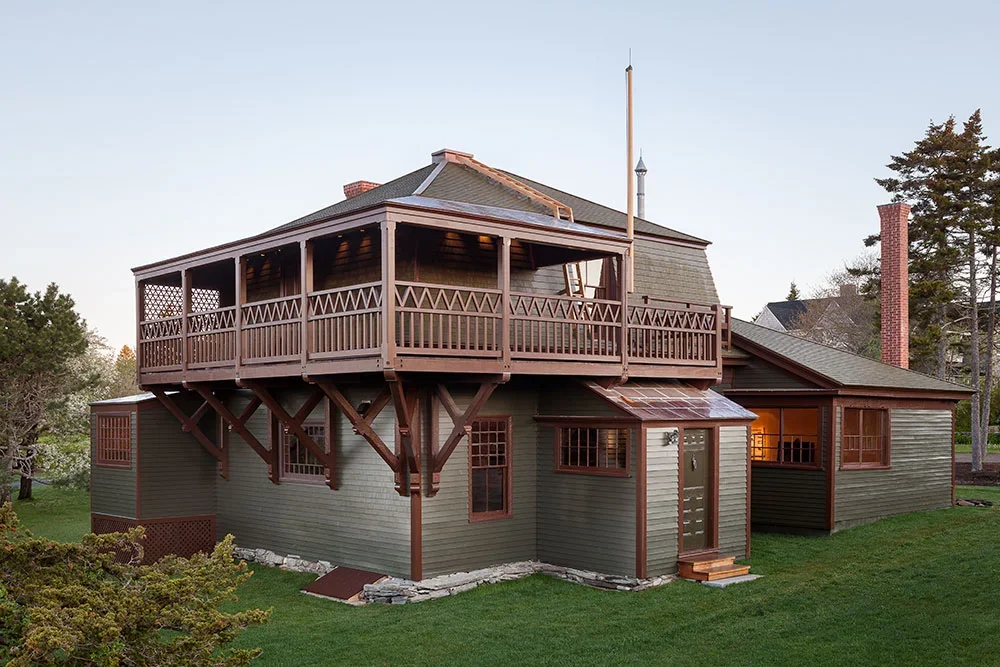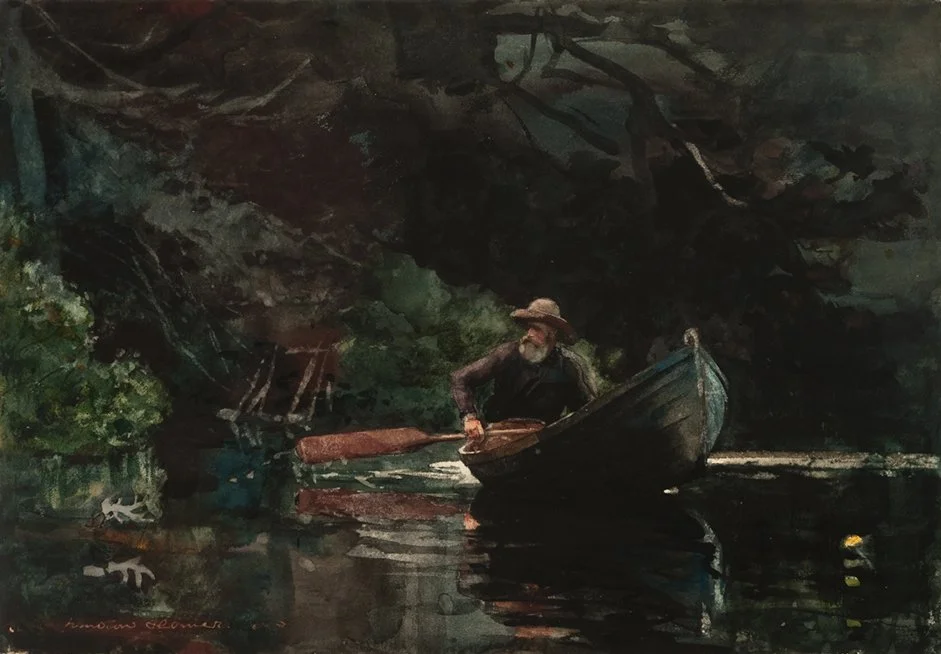Research, Reflection, and Adirondack Insights: Inside the 2025 Lunder Homer Fellowship
By Harper Gilbert
Portland Museum of Art Lunder Homer Fellow
August 19, 2025
During my time at the Portland Museum of Art as the 2025 Lunder Homer Fellow, I learned so much about the way museums work and about Winslow Homer’s artistic practice. Throughout my eight weeks at the museum, I met with staff members and learned about their roles. This was a valuable experience especially because I didn’t know just how many people it takes to run a museum behind the scenes and how many intricate jobs there are. I attended meetings and listened to the planning, execution, and brainstorming of creative minds, observing efficient collaboration. Many of my days consisted of chatting with curators, educators, and guides about the spaces and the art that occupies them, then going into the galleries to take time to acknowledge each piece, how and why it got there, and how to interpret it. This is where I really started to see what it means to work in a museum.
The first week or so, I had conversations with many colleagues, asking them about how they got into their position and why they love it, and I thought about what I wanted to get out of this fellowship and how it could help me figure out my own career path. After talking with the curators, I decided I wanted to help with the upcoming exhibition, Winslow Homer: Painter, Etcher. I took interest in the final section of the installation, which will feature Homer’s watercolors from the Adirondacks. My job was to aid the curatorial team by conducting research regarding the three watercolors that will be in the exhibition, The Guide, Leaping Trout, and An Unexpected Catch, as well as Homer’s time spent in the Adirondacks.
In studying these three works, I learned about Homer’s intricate watercolor technique; his loose brushstroke, marvelous colorwork, acute detail, and engaging composition. Along with his artistic skill, I also researched his personal life and time spent in the Adirondacks. He loved the mountains because they were a place of solitude and recreation, and especially loved Mink Pond were he was able to practice fishing—his favorite sport since he was young.
A valuable experience that aided in my research was a private tour of Homer’s Prouts Neck studio, which offered great insight into his personal life and family dynamics. The High School Homer fellows and I, along with a studio guide, explored the property imagining what life was like for Homer, and listened to great talks given by PMA tour guides who had extensive knowledge about Homer. That same day, we also had a very special guest stop by—one of Homer’s relatives, who has devoted her studies to preserving her relative's art and legacy. She dazzled us with her unique perspective on this great American artist, which we all agreed was the highlight of the day.
Towards the end of this fellowship, I was fortunate enough to have another unique experience. Before starting at the PMA, I had plans of visiting the Adirondacks for a week or so at the end of July. As mentioned before, I had been tasked with pulling information for the upcoming Homer Etchings exhibition, and had devoted my research to his time in the Adirondacks. This intersection between my research and summer plans created a unique opportunity and wonderful learning experience.
When I traveled to the Adirondacks I couldn’t help but think of Homer’s travels to the same place. I spent a week in the Adirondacks on a small lake near the town of Tupper. I stayed at a cabin on the lake and spent my days walking through the forests finding ponds and bogs, paddling around the water searching for fish (and not catching any), and spending time with people who share a love for this lifestyle. I found that yearning for a simple lifestyle in the outdoors brings together people with similar values. During my visit, I made time to attend the Adirondack Experience Museum, where I was able to set up an object viewing with their lovely registrar, Shelby Walton. With her help, I had the opportunity to experience a private viewing of a Homer watercolor and an etching print in their collection. One being a detailed print of a fly fisher on Saranac Lake, and the other a watercolor depicting a fly fisher from afar surrounded by tall trees set on the lake. The Adirondacks offered Homer many subjects and places to paint but out of these, he depicted things that held closest to his heart. Sportsmanship, local culture, guides who are also long-term friends, untouched wilderness—these were all things that inspired Homer in the Adirondacks and grasped his attention for 40 years. He returned to the Adirondacks at least 21 times, visiting his friends at The North Woods Club and immersing himself in the outdoors. He makes it clear when viewing his works how well he knows the places surrounding the lakes and in the mountains.
It was a wonderful experience being able to view the objects in such close proximity and extremely helpful to my research and practice building professional relationships in the field. My experience in the Adirondacks was instrumental in my understanding of Winslow Homer as an artist and the motivations and themes behind his masterpieces.
Thank you to the Portland Museum of Art for this wonderful summer as a Lunder Homer Fellow!







